Cheerful curves that deliver a central message: it's great that people are all different.
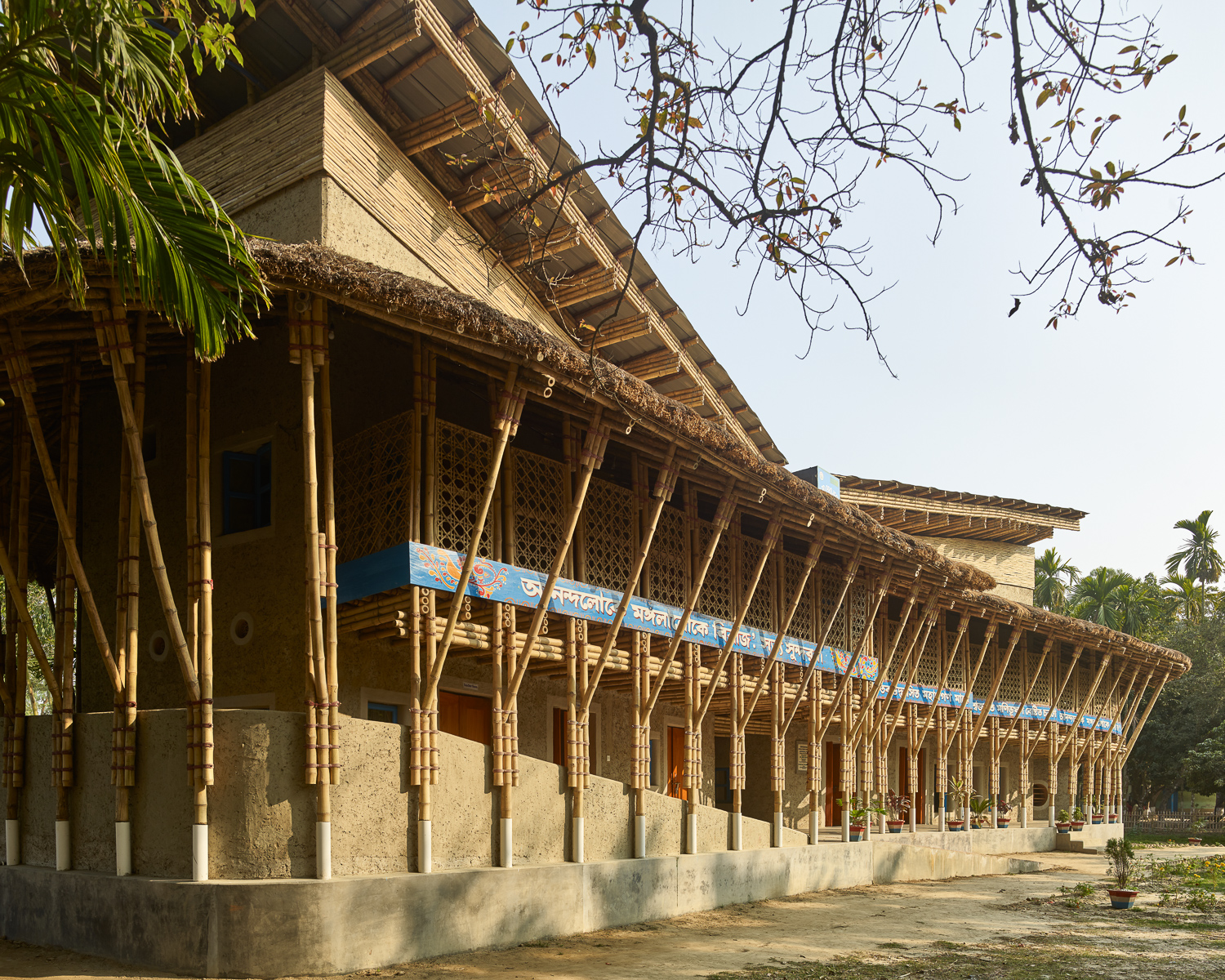
Social change. The Anandaloy in Rudrapur paves the way to the future - as architecture and as an institution.
Photo: © Kurt Hörbst
Architecture as a tool for improving life: with this conviction, the German architect Anna Heringer went about planning Anandaloy in Rudrapur, Bangladesh, a centre for people with disabilities as well as a small workshop for the production of fair-trade textiles called "Dipdii Textiles". Constructed from local materials such as clay and bamboo and with a lot of manual labour, it is the lived philosophy of the German architect who sees a building as much more than just a structure, but as a real catalyst for the local development of a region. The budget thus flows back to the local farmers and craftsmen, allowing space and resources again for the next projects. Anna Heringer has already gained a lot of experience with five previous projects in Rudrapur, including the METI school - a constant learning process that has continued to develop successfully.
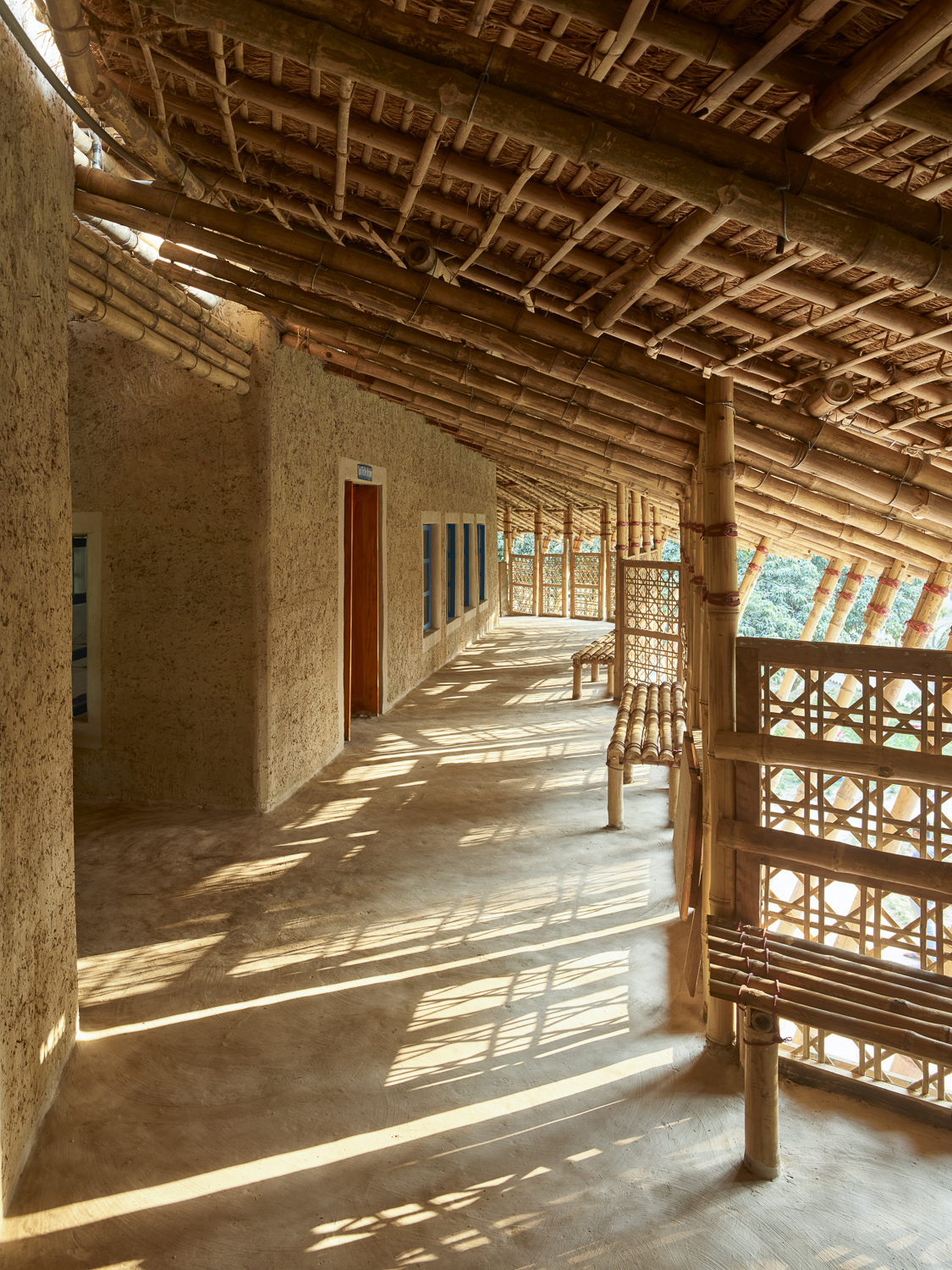
Grounded. There is nothing at Anandaloy that does not belong here.
Photo: © Kurt Hörbst
What is special about Anandaloy is that instead of a German construction company, this time a local construction company was used. In addition, a team of mud and bamboo workers from the village participated in the realisation of the project, including some people with disabilities. Sharing knowledge was a central concern of Anna Heringer as well as making disabilities visible, which in Bangladesh today are still seen as punishment or bad karma from a previous life. The inclusion of people with physical or mental disabilities, who would be left to fend for themselves in the absence of available therapy and care places, is therefore a fundamental element of the entire project.
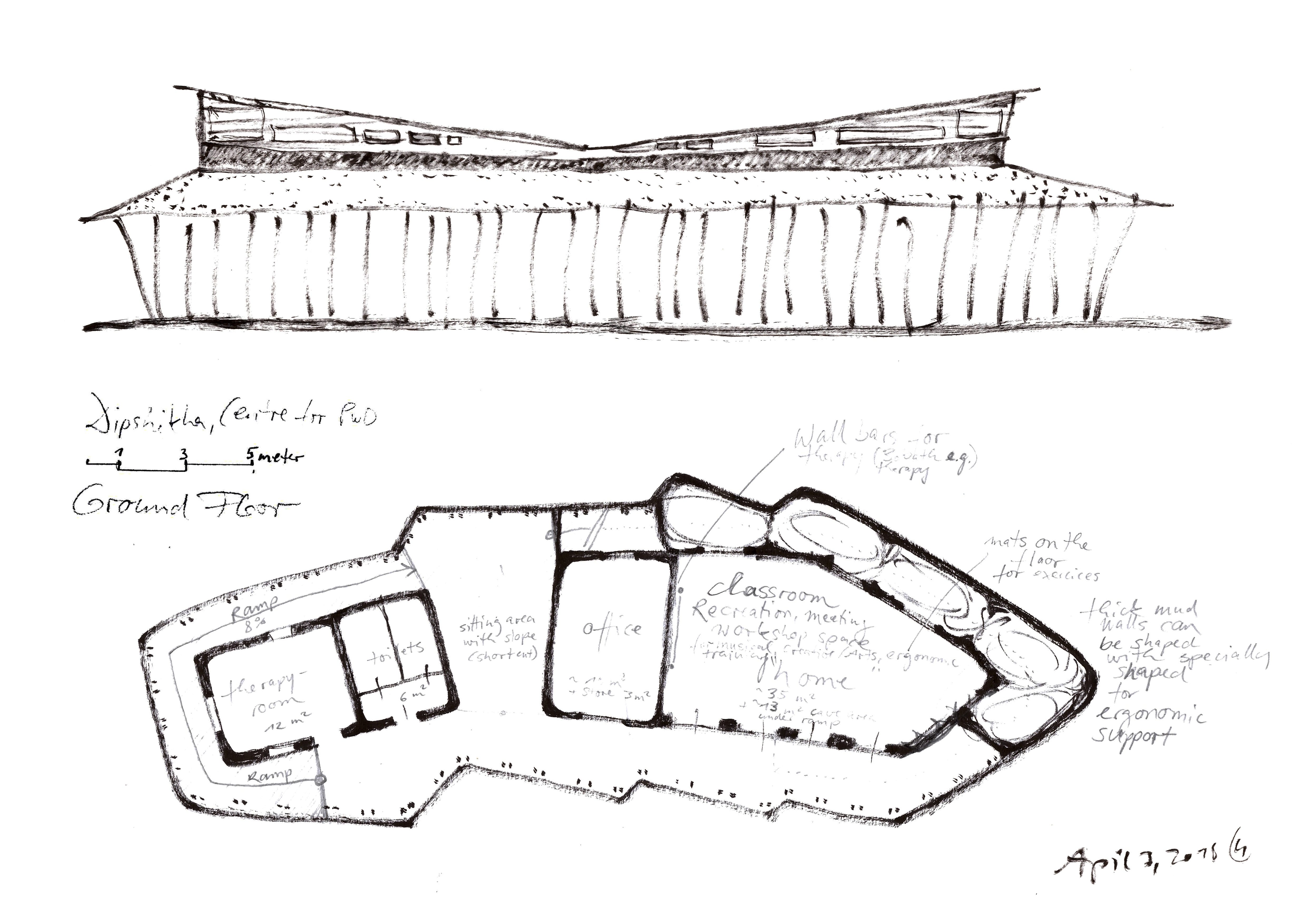
Curvy. The curves of the building are not common in this region - here, too, Anna Heringer takes a new approach to architecture.
Sketch: © Studio Anna eringer
The planned therapy centre was eventually joined by the idea of setting up a studio for dressmakers, which called for another storey. Anna Heringer, who thus created an effective remedy against urban-rural migration and at the same time an opportunity for women to find a job in their own village, personally helps oversee the new facility: "The concept was not only to provide therapeutic treatment for people with disabilities, but also to give them the opportunity to learn and work in this building and to get involved in the community. Everyone wants to be needed."
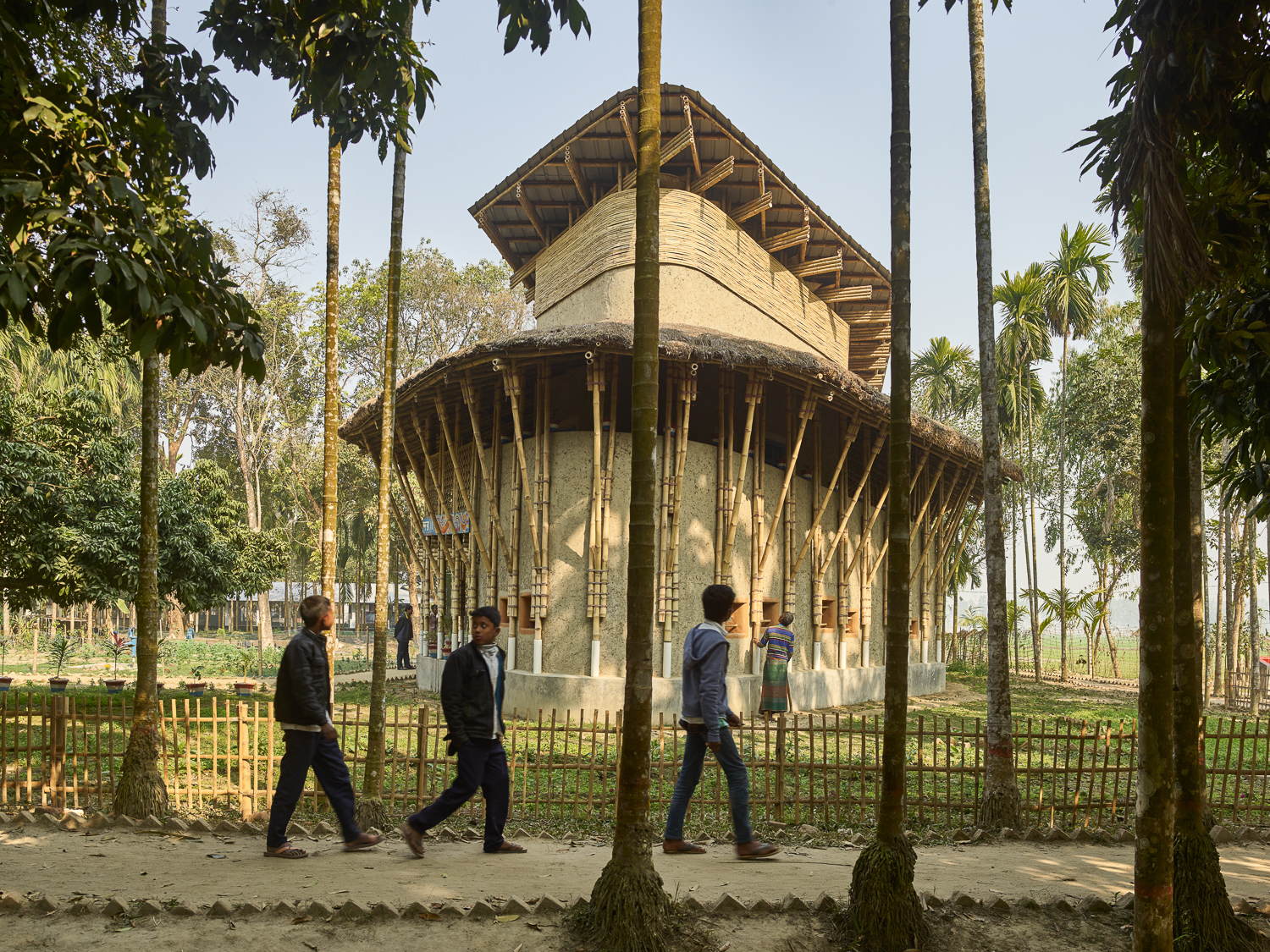
Inclusion. At Anandaloy, people with disabilities get their chance to show that they too - and especially they - are a valuable part of society.
Photo: © Kurt Hörbst
In order to convey the concept of content to the outside world, a large ramp was built as a visible sign of this inclusion, winding its way up to the first floor. This architectural gesture raised many questions among the population: Why is it important to ensure access for all, whether healthy or not? The doubts and perhaps fears of contact raised by this new access were soon dispelled. Neither one nor the other stood a chance with Anna Heringer as far as the choice of building material was concerned. She deliberately chose clay and its sculptural capabilities to create a stronger identity, even though it is often seen as a bad and old-fashioned material. "For us, it doesn't matter how old the material is. It's about our creative ability to use it in a contemporary way. To show the beauty and capabilities of clay, you have to get the best out of it and not just treat it as a cheaper version of brick."
Stefano%20Mori-5.jpg)
Potentials. Anna Heringer appreciates clay as a versatile, sustainable and innovative building material.
Photo: © Stefano Mori
The Anandaloy building breaks taboos in every respect: it does not subordinate itself, neither in terms of content nor form. The curves constructed with the "cob" clay technique speak volumes. Unlike the other buildings in the area, which were constructed in a rectangular layout, the Anandaloy building breaks out of this shape. It dances in curves, the ramp playfully winding around its inner structure.
Stefano%20Mori-13.jpg)
Authentic. The Anandaloy is closely connected to the site through the local materials of clay and bamboo.
Photo: © Stefano Mori
The strategy of all Anna Heringer's projects - whether in a European, Asian or African context - is to combine the use of local materials and local energy sources, including manual labour, with global know-how. A commitment that was awarded the Philippe Rotthier European Prize for Architecture in 2021.
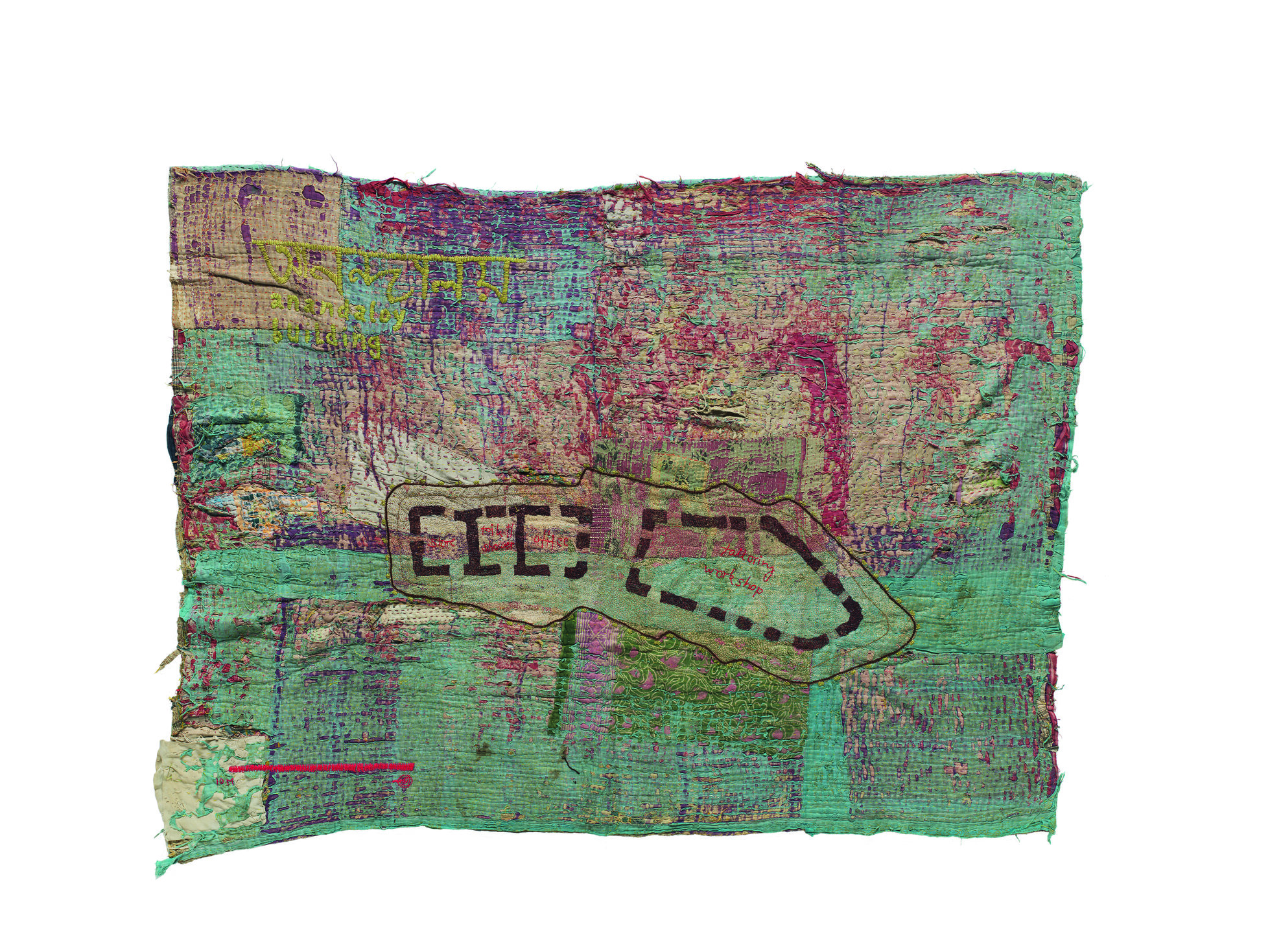
Women power. In the tailoring studio, women from the region gain a bit of independence and self-confidence with their self-produced work.
Photo: © Günter König
Originally written by Barbara Jahn